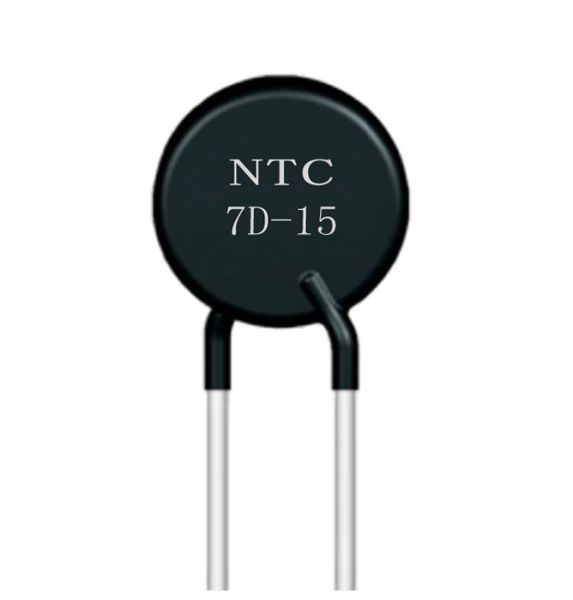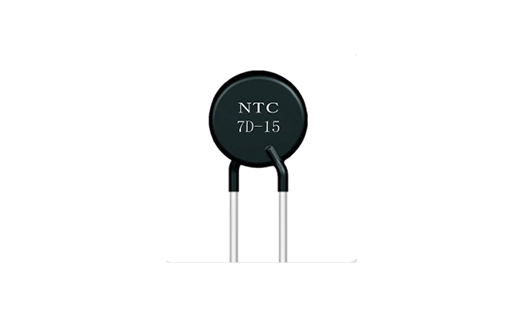Home > Company News > How to Measure the Quality of the Thermistor?
Company News

Due to the unique performance of semiconductor thermistors, it can not only be used as measuring components (such as measuring temperature, flow, liquid level, etc.), but also as control components (such as thermal switches, current limiters) and circuit compensation element. Thermistors are widely used in various fields such as household appliances, electric power industry, communications, military science, aerospace, etc., and their development prospects are extremely broad.
When testing the thermistor, first test its resistance in an indoor environment, and then hold the product with your hand to test to see if its resistance becomes smaller. If it changes, it means normal, otherwise, it is abnormal. Note: Special instruments should be used for accurate measurement during testing. The following thermistor China supplier introduces some measurement methods.
1. Room temperature detection
Set the multimeter to the resistance file, and the two meters touch the two pins of the thermistor. The reading of the multimeter is the resistance value of the thermistor under test at room temperature. On the premise of correct selection of the resistance file, if the reading is o or infinity, it means that the thermistor has been damaged.
2. High-temperature detection
Use an electric soldering iron as a heat source close to the thermistor. If the resistance displayed by the multimeter changes significantly from the resistance at room temperature, remove the soldering iron and the negative value will return to the negative value at room temperature, indicating that the thermistor is good.
3. Low-temperature detection
Clamp the two pins of the thermistor with a multimeter clamp, and put the thermistor into the refrigerator. Normally, the negative value displayed by the thermistor with a negative temperature coefficient is significantly larger than the negative value at room temperature; for the thermal resistance with a positive temperature coefficient, the resistance value displayed by the multimeter is significantly lower than the negative value at room temperature.
4. Heating method
Connect the two lead wires of the thermistor with the resistance gear of a multimeter, and then use a hot electric soldering iron (20W is fine) to heat the thermistor (close to the thermistor). For the PTC type thermistor, as the temperature increases, the resistance value should increase; for the NTC type thermistor, as the temperature increases, the resistance value should decrease. If the thermistor is heated, its resistance does not change, indicating that the thermistor is damaged.
5. Multimeter measurement method
Positive temperature coefficient thermistor (PTC) detection

Thermistor
When testing, the multimeter is adjusted to RÃ1 gear, which can be divided into two steps:
(1) Normal temperature detection (indoor temperature is close to 25â): The actual resistance value of the two pins of the PTC thermistor is measured by touching the two test leads to the two pins of the PTC thermistor, and compared with the nominal resistance value. The difference between the two is within ±2Ω. normal. If the actual resistance value differs too much from the nominal resistance value, it means that its performance is poor or damaged.
(2) Heating test: On the basis of the normal temperature test, the second step of the testâheating test can be carried out. Put a heat source (such as electric soldering iron) close to the PTC thermistor to heat it, and monitor its resistance with a multimeter. Whether the value increases with the increase in temperature, if it is, it means that the thermistor is normal. If there is no change in the resistance value, it means that its performance has deteriorated and cannot be used continuously. Be careful not to put the heat source too close to the PTC thermistor or directly touch the thermistor to prevent it from being burned.
Negative temperature coefficient thermistor (NTC) detection
(1) Measuring the nominal resistance value Rt: The method of measuring NTC thermistor with a multimeter is the same as the method of measuring ordinary fixed resistance, that is, according to the nominal resistance of the NTC thermistor, selecting the appropriate electrical barrier can directly measure the Rt Actual value. But because NTC thermistor is very sensitive to temperature, the following points should be paid attention to when testing: ARt is measured by the manufacturer when the ambient temperature is 25â, so when measuring Rt with a multimeter, the ambient temperature should be close to 25 It is carried out at â to ensure the reliability of the test. B. The measured power must not exceed the specified value to avoid measurement errors caused by current heating effects. C pays attention to correct operation. During the test, do not pinch the thermistor body with your hands to prevent the body temperature from affecting the test.
(2) Estimate the temperature coefficient αt: the first measure the resistance value Rt1 at room temperature t1, and then use an electric soldering iron as a heat source, close to the thermistor Rt, measure the resistance value RT2, and use a thermometer to measure the thermistor RT at this time The average surface temperature t2 is then calculated.
-
2016 Hot sale low price resistance
-
nRF51822 Bluetooth Smart Beacon Kit 256kB flash 16kB RAM BLE4.0 Bluetooth 2.4G Wireless Module nRF51822-QFAA
-
Nordic beacon WT51822 S4AT with CE FCC RoHS bluetooth le beacon serial module WT51822S4AT nRF51822
-
Remote Wireless Networking Equipment ESP8266 cheap embedded WIFI module small wireless transceiver module ESP8266 ESP-12e
-
Cap Ceramic 47uF 10V X5R 20% SMD 1210 85?? Embossed T/R
-
3.3uF 33uF SMD Tantalum Capacitor
-
electrolytic capacitor
-
GV series conductive polymer hybrid electrolytic capacitors SMD Type
-
EM series conductive polymer hybrid electrolytic capacitors SMD Type
-
EV series conductive polymer hybrid electrolytic capacitors SMD Type
-
PF series conductive polymer aluminum solid capacitors Radial Type
-
PC series conductive polymer aluminum solid capacitors Radial Type
-
PE series conductive polymer aluminum solid capacitors Radial Type
-
PD series conductive polymer aluminum solid capacitors SMD Type
-
SAMSUNG AEC-Q200 MLCC CL32Y106KBJVPJE
-
PV series conductive polymer aluminum solid capacitors SMD Type
-
CBB60 Metallized polypropylene film AC motor start capacitor(column, plastic case)
-
CBB65 Metallized polypropylene film AC motor capacitor(column, plastic case)
-
3Phase 250VAC~480VAC 50Hz/60Hz Power Factor Correction Capacitors KVAR
-
High Current Low Inductance Polypropylene DC Link Capacitors For Inverters Applications
-
Welding Inverter Dry Film Capapcitors CBB15 CBB16
-
Cylindrical Aluminium Can DC-Link PPM Film Capacitors
-
High Voltage Capacitors Bank
-
C56 capacitor
Popular Searches
- electrolytic capacitor
- ceramic capacitor
- capacitor
- mfd
- Capacitors
- film capacitor
- aluminum electrolytic capacitor
- high voltage capacitor
- Motor Run Capacitor
- Power Capacitor
- Super Capacitor
- Metallized Polypropylene Film Capacitor
- Fan Capacitor
- Ac Motor Capacitor
- Metallized Polyester Film Capacitor
- Ac Motor Run Capacitor


